The President, Mr. Suhas Paranjpe,
took the chair and called the meeting to order. All the business as per
the agenda contained in the notice was conducted, including adoption of
accounts and appointment of auditors.
Mr. Mihir Sheth,
Hon. Joint Secretary, announced the results of the election of the
President, the Vice-President, two Honorary Secretaries, the Treasurer
and eight members of the Managing Committee for the year 2021-22.
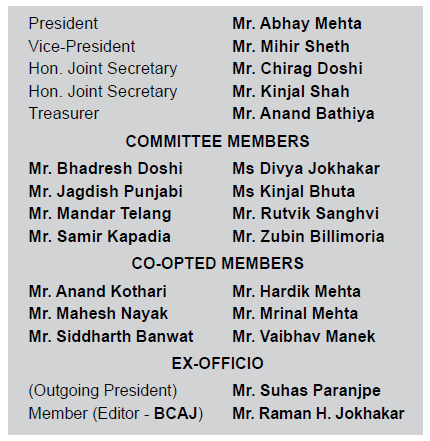
The ‘Jal Erach Dastur Awards’ for the Best Articles and Features appearing in the BCAS Journal during the year 2020-21 were also presented on the occasion. For Best Article the Award went to Sandeep Parekh and Manal Shah (both Advocates) for their Article PFUTP Regulations – Background, Scope and Implications of 2020 Amendment. The Award for Best Feature went to CA Vinayak Pai for Financial Reporting Dossier.
The July special issue of the BCA Journal was e-released by Mr. Azim Premji. It carried special articles on Effects of the Pandemic on CA Profession (by CA Ninad Karpe and CA Madhukar N. Hiregange), The Economy (by Niranjan Rajadhyaksha), The Human Psyche (by Dr. Bharat Vatwani) in addition to the regular articles and features. Before the conclusion of the AGM, members, including Past Presidents of the BCAS, were invited to share their views and observations about the Society.
The 73rd Founding Day lecture was delivered at the end of the formal proceedings of the AGM. It was an outstanding oration by Mr. Azim Premji, Founder Chairman of WIPRO, who spoke on the topic ‘Professional Excellence and Social Responsibility’. It was attended online by more than 3,392 professionals on Zoom and the YouTube channel of the BCAS.
OUTGOING PRESIDENT’S REPORT

SUHAS PARANJAPE:
You have just witnessed a short video clip presenting the annual
activities for 2021-22 in summarised form. (The annual report has
already been emailed to members.) You must have also noticed that the
clip ended with my favourite song Jai ho! from the popular movie Slumdog
Millionaire.
During the year just gone by, I received many
answers / solutions / feeds to various situations through intuition,
experience, the observations of many Past Presidents, my Chairmen,
Office-Bearers, Managing Committee members and volunteers. They made my
year successful so that today I can say with pride – ‘Jai Ho!’
I acknowledge the virtual presence of Past President P.N. Shah, Dilipbhai Thakkar and other seniors. I offer my namaskaar, adab to all of you for the opportunity given to me to serve you as President of the BCAS. I thank each and every one of you from the bottom of my heart.
I have had a unique privilege and I feel honoured to say that I am the first-ever ‘virtual’ President of the BCAS in
its 72-year history! At the same time, I sincerely hope and pray that I
would be the last one to have registered such an achievement. I don’t
wish to have any competition in this! On a lighter note, if ever the BCAS decides
to make Past Presidents eligible for Presidentship in the future, I
should be given the honour of being the first in the line! All of you
will agree with me, and since this is a recorded meeting, I can take
this as proof of your agreement!
I do not wish to repeat how
challenging the year was and how we converted all ideas into
opportunities and so on. All of you were part of this endeavour. I will
only say that we explored and exploited the power of the BCAS platform and the power of digitalisation to a large extent to create visibility, to reach higher, to perform better.
Right
from the beginning of my tenure, I had decided that I would try to be
like plain, simple and clean (nirmal) water in which one can mix any
colour that would lead to a colourful experience. My role was only to
ensure that the colours are shuddha, satvik, traditional Indian colours
without any chemicals in them. In actual fact, I never had to play the
role of identifying whether the colours are good, genuine or otherwise.
All the colours during the year were original, shuddha and satvik beyond
my imagination. I am happy that I could carry this thought process to a
large extent to my satisfaction and it made my tenure and term really
colourful and glorious. I thank all of you for the same.
There are two or three initiatives that I would like to mention.
First, the BCAS Chowk.
I had heard this subject being discussed in the Managing Committee
meetings many times and for many years. It became my focus area and I
started working on it immediately after taking over as President. There
were many hurdles and roadblocks in the process. The process is very
long and requires a lot of follow-up. As per the Municipal Corporation’s
policy, special permission is required for names to be given for an
organisation. Had there been no Covid lockdowns, we would have had our BCAS Chowk by now. But we are still trying our best and we hope that we will have BCAS Chowk
added to our address in the next few weeks. I must place on record the
one person, other than our Past Presidents, Office-Bearers and
volunteers, who stood by me, none other than the Maharashtra Industry
Minister, Shri Subhash Desaiji. He considered our request
immediately and set out to honour our voluntary organisation that has
existed for 72 years and which is an outstanding achievement. All of us @
BCAS thank him for his support.
A second initiative which I kept as my focus point was to bring more vibrancy and activity to the BCAS Foundation. All the trustees supported us as we formed our Project Management Committee (PMC) under the chairmanship of CA Dr. Mayur Nayak.
We have started joint activities with other NGOs. But we feel that
there is still a long way to go and much more to be done. I thank all
the trustees and PMC members for their active involvement and support.
Last
but not the least, we had a good fellowship and association with sister
organisations such as the IMC, the CTC, our own WIRC, the regional CA
associations of Ahmedabad, Chennai, Bengaluru, Lucknow and Surat – we
had joint programmes, joint representations and so on. It was easier
with our digital base. For BCAS members we did good networking
with publication services for regular discounted publications and with
software vendors to give competitive pricing.
The pandemic taught
us so much – how to work, how to conduct events / programmes, how to be
educated without attending physical seminars and conferences, how to do
audits and render services without visiting our clients’ place – in a
nutshell, how to remain relevant under all circumstances. The show must
go on and with much more force through innovations. Zoom, Meet, Teams,
etc., became our family members, ‘You are on mute, Sir’ became our tag
line! To be positive became negative and stressful, being and remaining
negative became an honour. We of this generation are lucky to have lived
this experience. But the sad part is that the pandemic also taught
families how to face health crises, financial crises and in a few cases,
even to live without their near and dear ones.
Ironically, the
pandemic created a great deal of financial inequality but it treated
every one equally – the rich, the poor, the elderly, the youngsters, and
there was no gender inequality. One thing is certain now, the ‘new
normal’ is now settled and it will be the future – maybe in a hybrid
manner and for which the BCAS should prepare itself, both mentally and technologically.
I congratulate the incoming new team of Abhay, Mihir, Chirag, Anand and Kinjal – it is a great combination of experience, maturity, technical and tech-savvy people to take BCAS forward
and into a new orbit and zoom towards its 75th year in style with new
hope (asha) and inspiration (akanksha) and to greater heights
(unchaiyaan). I wish them all the best with my support and good wishes.
All of you have played your innings for me and now it’s my turn to help
you in whatever way I can. I wish you all the very best.
I can’t thank my family members enough – my mother Shalini, wife Swati and son Aarav, for their support and encouragement. My senior partners Mayurbhai Vora, Bharatbhai Chovatia and their families kept me motivated all along, as did all my other partners, Kinnari, Bhakti, Ronak and Vinit and
all the team members. I thank everyone in my office for their help and
support. Many of my clients-cum-mentors, friends and relatives always
provided me with inputs and appreciation.
Team BCAS has
always been the backbone of all Presidents. I and my Office-Bearers
hardly met any of them during the year. We are aware that Work From Home
is not always easy. It has its advantages and disadvantages, but all of
them worked to the best of their abilities. There is always a scope for
improvement which will enhance the Office-Bearers’ execution and
productivity. We are all time-bound executives. As our long-term
resources, it is our duty and responsibility to keep team BCAS motivated at all times. I wish all of you a good life ahead.
Covid
is still in the air and it will require a huge effort by the Government
machinery to keep it in control. Besides, there is the vaccination
(which is an external support); but if all of us build our own immunity
(an internal strength), I am sure we would be able to tackle this health
challenge. I wish all of you a healthy and happy life.
I
conclude by bowing down to the huge membership of this large
organisation for its support during the year. May I now request incoming
President Abhay to present his annual plan for the year 2021-22.
INCOMING PRESIDENT’S SPEECH

ABHAY MEHTA: Good evening, BCAS family. My colleagues on the virtual dais, Suhas, Vice President Mihirbhai, outgoing Joint Secretary Samir, Joint Secretary Chirag, Incoming Duo – Treasurer Anand and Joint Secretary Kinjal, virtually assembled, respected Past Torchbearers of BCAS, seniors and fellow professionals.
I heartily welcome you all to the AGM.
I am addressing this august gathering due to the honour showered on me to lead the Temple of Knowledge – BCAS as the President in its 73rd Year.
I have a mixed feeling of elation and responsibility at this moment when I am addressing you all.
Elation, because I have been considered worthy to lead BCAS for a year and Responsibility for upholding and carrying forward the rich legacy of BCAS. I am also excited
that I shall have an opportunity to implement some of the initiatives
which I feel will be able to contribute to the development of the
profession thereby enhancing the image of BCAS.
The responsibilities are manifold. First of all, I have to prove my worth during the year to the torchbearers of BCAS who have reposed their confidence in me to lead the Society. Secondly, I have to meet the high standards set by my worthy predecessors. Thirdly, I am conscious of the dynamic changes which our profession is passing through, where an organisation like BCAS has to play the role of catalyst to empower professionals with relevant learnings.
The role of BCAS over
all these years has been transformational and I am conscious of this
role, which has been passed on over all these years by each President to
follow. Here, I shall be guided by the wisdom of my GURU Mahatria Ra,
who has very well said:
The purpose of knowledge
is not to build memory
but to create
understanding and transformation.
At
this juncture, I would like to bow before Lord Shriji Bawa, for
blessing me and making me worthy for the coveted post of President at BCAS.
I also seek the blessings of my parents Late Rashmikant Mehta and Late Kailas Mehta. I am sure wherever they are, they would shower their blessings and would feel proud to see me at the helm of BCAS. In climbing up the ladder of the profession, there is one critic and well-wisher who has played a vital role by taking care of the responsibilities of the family and also on the social front. She is my wife Nipa,
whom I want to thank profusely for being a solid support in my journey
as a professional. She ensured inculcating values and taking care of the
upbringing of our son Udit, who is also a qualified professional.
Before I share my journey at BCAS and my vision for the year, I take this opportunity to summarise the year gone by under the able leadership of Suhas.
The year had started amidst the pandemic, but the zeal of Suhas was like a double vaccinated person in a hurry to serve BCAS with his selfless service. His Theme for the year was ‘Tradition, Transition and Transformation’. He has excellently steered BCAS as per his theme to take it through the process of Transition in a manner which did not lose the values and ethos of Tradition. He stepped on the accelerator and increased the speed of Transition which brought about many Transformational changes in the way BCAS delivered its offerings to its members and the public at large.
Suhas’s approach made me relive the preaching given by my GURU Mahatria Ra,
‘Make
yourself a success magnet. Begin. Take the lantern in your hand, and
you will always have light enough for your next step. One step at a
time… Go… Keep going… Keep growing.’
I felt he ably
applied the above during the time of the pandemic when things were hazy
and the road was not just less travelled but I would say, it was never
travelled.
During the year, we witnessed Lecture Meetings and Panel Discussions on topics as varied as ‘Building a Professional Services Firm’ to ‘Cryptocurrencies’. The Residential Courses in Virtual Avatar were so engrossing that everybody was saying ‘Yeh Dil Maange More’. The meticulous planning and the thought process which went into organising Group Discussions and General Assembly were immaculate. It is for certain that a trend is set, even after restrictions on physical meetings are lifted, there will be a Hybrid Model to be worked out to serve the interest of participants who may not be able to travel to the destination of the event.
Suhas, I was witness to the interest you took in the planning of each event and the way in which you delegated decision-making for each event in the hands of the able teams backed by effective inputs and guidance wherever required from your end. Though the year was only through Virtual Events, you made your presence felt as if you were there with each one of the executing people involved in the events.
I was a silent observer of your management style and I must admit that you have a humane approach to deal with the situations. You remained calm and composed and were never tensed even during the moments of crisis. I can definitely say that my key takeaway while being deputy has been to remain cool in all situations.
Suhas, I convey my best wishes for the future, with confidence that your contribution during my tenure will be equally valuable in taking BCAS to greater heights.
Now, I turn to my exciting journey at BCAS. I was witness to my father’s passion as a BCAS member as he was an avid reader of the BCA Journal and actively participated in the seminars and RRCs. He always encouraged me to become a member of BCAS, which I did in 1994 and immediately started attending RRCs. In those years the RRC was held in the month of April and I used to celebrate my birthday at RRCs for some years.
My participation at the RRCs and seminars was noticed by our Past President Mr. Rajesh Muni and he invited me to join the Core Group in the year 1999-2000. I convey my sincere thanks to Rajeshbhai, for involving me actively at BCAS. I was inducted in the Accounting & Auditing Committee which gave an impetus to my passion in this area of the profession. I was made Convener of this Committee in the year 2003-04 and continued to serve in that capacity for 15 long years. During my journey as Convener of the Accounting & Auditing Committee, I worked under the Chairmanship of not less than six Past Presidents.
The learnings from each one moulded my outlook towards the profession
and assurance area of practice in particular. I would make a special
mention of Himanshu Kishnadwala, under whom I was convener for
the maximum number of years. He has that sense of urgency with an eye
for detailing, which appealed to me and also inspired me to become
meticulous in approach and to be prompt in responding to the issues. I
served during the past two decades on other committees too, but my heart
was always in the field of Auditing and Company Law.
On my birthday in 2017, Narayanji, who was to take charge as President for 2017-18, approached me to be part of his team. Narayanji,
I convey my sincere gratitude to repose confidence in me and inducting
me as an Office-Bearer. I also got fair glimpses of working at BCAS when my partner and dear friend Chetan had been the President in the year 2016-17.
I can vouch for one thing from my experience, that the model of BCAS with Past Presidents as Chairmen to guide the Conveners and the Committees, is so robust that there is perfect grooming of the young talent to be sound not just academically but also administratively.
I owe a lot to BCAS for improving my skills and outlook towards the profession. The culture at BCAS
is such that the seniors make youngsters really comfortable during
exchange of ideas by frankly sharing their knowledge and experience.
After reminiscing my journey at BCAS, I am now eager to share with you my thoughts on the year 2021-22 where I aspire to contribute to the progress of BCAS and the profession at large. This aspiration is with an approach where I would be heavily banking on the collective wisdom and support of all the Committees. I had occasion to convey my thoughts to each committee when we had our first meeting for planning the activities for the year. I am glad that each committee has wholeheartedly supported the Theme which I have for the year and they have commenced planning events encompassing the theme.
I firmly believe in what my GURU has preached on pursuing goals and achieving the same. He says:
The strength with which an idea is pursued
Will magnetise the resources
that are required
for the accomplishment of the idea.
You
may feel, I am referring many a time to my GURU Mahatria Ra. However, I
would at this juncture share that I have developed a lot of positivity
by going through his teachings. I always remind myself to have a
positive approach whenever I face situations of difficulties or crisis
in my professional or personal life. This approach has always provided
me a path since it is calmness which allows a rational thought process.
Let
me now delve into my theme for the year. It is based on the acronym
which is the current flavour for businesses, professionals, capital
markets and economists. However, the same acronym for my theme is for a
different meaning and purpose. Individually, each word in the acronym is
of critical importance to our profession as well as the country as a
whole.
The Theme for the Year is ‘ESG’.
EMPOWERING SCALING GLOBALISING
To achieve Empowering, I have identified certain executable initiatives:
- I wish that BCAS becomes an enabler of showcasing latest knowledge on the upcoming areas of professional opportunities to the SMPs and Young CAs.
- Concerted efforts be made to create a platform for networking amongst members of BCAS from all over India.
- My aim is that the public at large should not view CAs merely as Tax Advisors but they should perceive CAs as Business Advisors.
Towards this shift BCAS shall aim to equip its members and CA community
with working knowledge on other relevant ancillary laws.
Scaling up of the Professionals at BCAS is planned through the following initiatives:
- We have in all ten committees, professionals with experiences in varied fields of profession and business. It is my endeavour to create a platform, where thought leaders from BCAS Core Group and through the contacts of BCAS members be brought on the BCAS Platform to guide SMPs by providing vision for scaling up their offerings. The dissemination of knowledge
should be such that they can equip themselves for providing services
which offers professional satisfaction and in turn adds to the efforts
towards nation building.
- BCAS has been a leading professional association and has its reach throughout India. However, there have been barriers to go on its own beyond a certain reach. A concerted effort shall be made to reach out to various local CA chapters from different parts of the country as well as trade and industry bodies of various states. In reaching out, I have requested each committee to become knowledge partners with them, thereby attracting members and also to jointly create advocacy on critical issues to be taken up with the regulators.
- The year gone by has provided glimpses of the changes in the profession which are to come, in fact at a rapid pace on account of adoption of technology in all spheres of life. BCAS shall ensure to design seminars, workshops enabling professionals to embrace technology. This will bring accuracy in the execution of services and efficiencies in deliverables.
Indian
businesses are going places and have internationalised their
operations. Our profession is also spreading its wings. To ensure our
members are provided opportunities to explore Globalising their services, I have plans for BCAS to take the following steps:
- To organise programmes creating awareness of the professional services which may be offered by members at a global level.
- In this virtual world, distances do not matter. We can now be enlightened by speakers of international repute. Efforts shall be to share latest global developments in varied fields of professional interest through such speakers. Also seminars, workshops shall be planned to disseminate knowledge on latest developments which enables members to equip in rendering services at global level.
- There would be professional associations similar to BCAS operating in different geographies worldwide. There will be efforts to tie up with few such associations to cross-sell events and publications. Efforts will also be made to understand best practices from such counterparts and bring to our members to enable them to be globally relevant.
These are my thoughts which I will drive through the year. I am of the humble belief that if our team of dedicated Core Group provides their valued inputs on the aspects of this year’s theme, we shall be able to add at least some additional value to the members’ professional capabilities.
I have been part of the Core Group since two decades. There have been many initiatives over the years, which have developed the Brand BCAS. Over these years and lately since I entered the Managing Committee and have been a part of the Office-Bearers, I have observed that there are various pockets of operations within BCAS, which can be further improved.
We have to make conscious efforts not just in a single year of each President. Rather, a concerted and long-drawn process has to be evolved to improve the functionality within BCAS. With this approach in mind, I discussed my thoughts with the incoming Office-Bearers team. As an outcome of the same, I am laying before you all, the Internal Goal-Setting exercise for BCAS, for which I have taken assurance from the Office-Bearers to continue on the same in the years to come.
This is my Leap of Faith, that the BCAS will attain much greater heights in the years to come by executing the exercise by the name LEAP.
Again, I am tempted to quote my GURU Mahatria Ra:
Highest manifestation of
Human intelligence is
FAITH
LEAP denotes:
• Leadership for BCAS;
• Excellence at BCAS;
• Accountability to BCAS members; and
• Professionalism in BCAS.
I would like to elaborate each in a few words.
Leadership
BCAS is unarguably one of the leading professional associations. To continue and improve its Leadership position and to be of relevance for the profession, BCAS will have to identify and groom future leaders.
Excellence
Excellence will be possible by keeping a close watch on the latest developments in the profession. There has to be continuous exchange of ideas in each committee and frequent meetings to deliberate on such developments. Once there is such alacrity, then it would be easy to identify relevant offerings for the benefit of members and public at large.
During the pandemic, we have realised the power of technology. Now there are no barriers of distance for bringing on board excellent faculty and for attracting participants for professional offerings. BCAS will initiate all the necessary steps to have an edge technologically while offering learning initiatives so as to be considered as an excellent place to imbibe knowledge.
Accountability
I am aware that we have been receiving lots of grievances related to the website functioning, online payments functionalities, delayed responses to the issues raised by members, etc.
There is a thought process to improve experience of members with the BCAS as an organisation. Towards this end, we shall be creating dedicated email ids for various types of grievances to be monitored by a responsible person at BCAS.
At Office-Bearers level, we shall take on responsibility to monitor the replies given and unattended grievances.
We shall develop a feedback mechanism, whereby professionals can send their experiences for the hardships faced in various compliances as well as their viewpoints on topical subjects for the progress of the profession. The collation of such feedback will be sent to the respective committees to deliberate and on quarterly basis the Managing Committee would discuss to give responses to the respective members regarding the BCAS view and action taken at its end.
Professionalism
BCAS is an organisation run by the professionals and for the professionals. It is of paramount importance to have professionalism inculcated in each area of its operations. We are conscious of the fact that BCAS is run by volunteers and hence there is a need to have technology playing
a greater role in seamless execution of its functions. This year while
passing the accounts, the Managing Committee has allocated a substantial sum of Rs. 35 lakhs towards Technology Fund. We shall ensure effective use of the allocation towards a robust database, efficient execution of events and provision of timely information for the members. We shall take steps to have effective training of the manpower so
as to execute their functions in the most efficient manner. This will
also reduce the burden on the young core group members who have to
devote time and effort during the events’ execution.
I know I have projected many things to be carried out during the year, which may be felt difficult to attain. However, I commence my journey as President with a clear conscience, which is truth. The truth is both honesty and integrity. I want to assure each one in the BCAS family, that my efforts to achieve what I have laid before you all will be with honesty and integrity.
With these words, I conclude my speech and I hope that my efforts with your guidance and support will take BCAS to further heights of glory.
Thank you all.










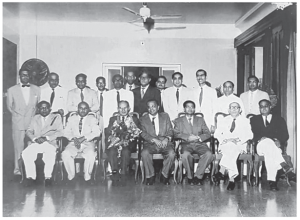

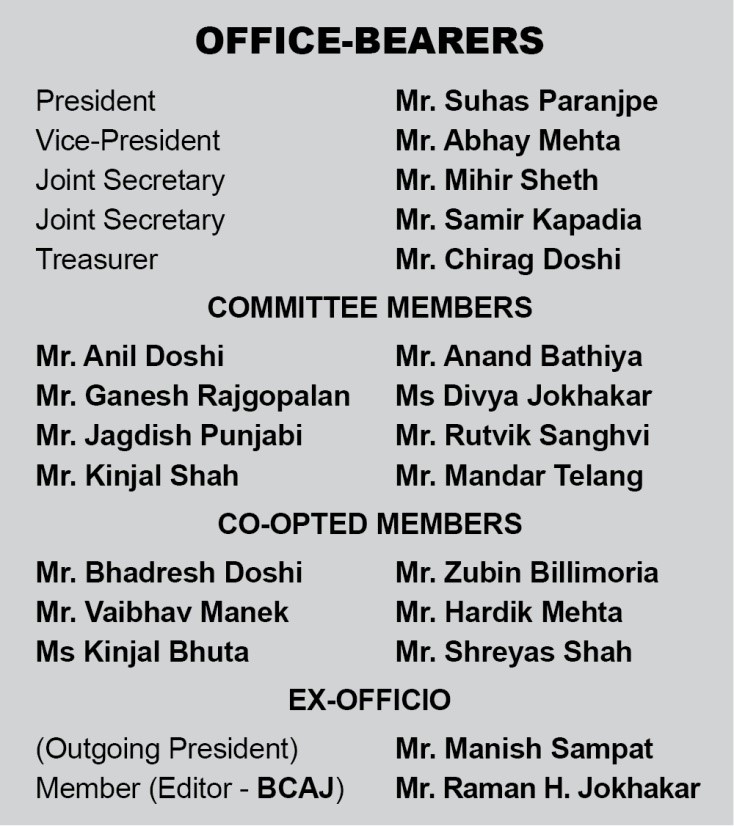


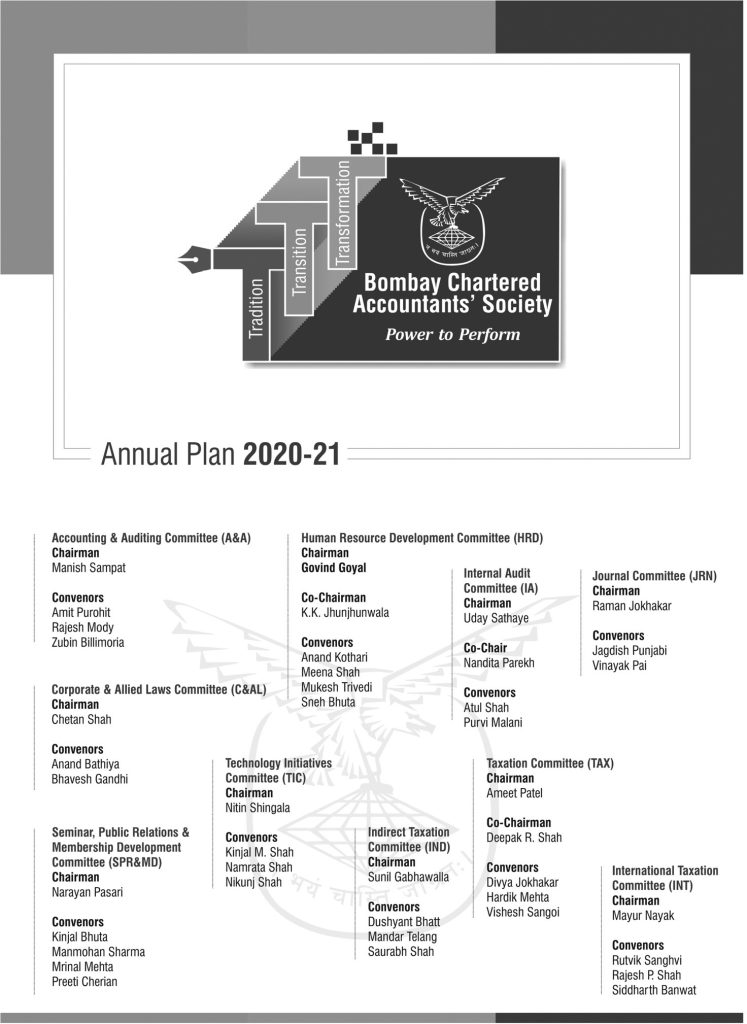
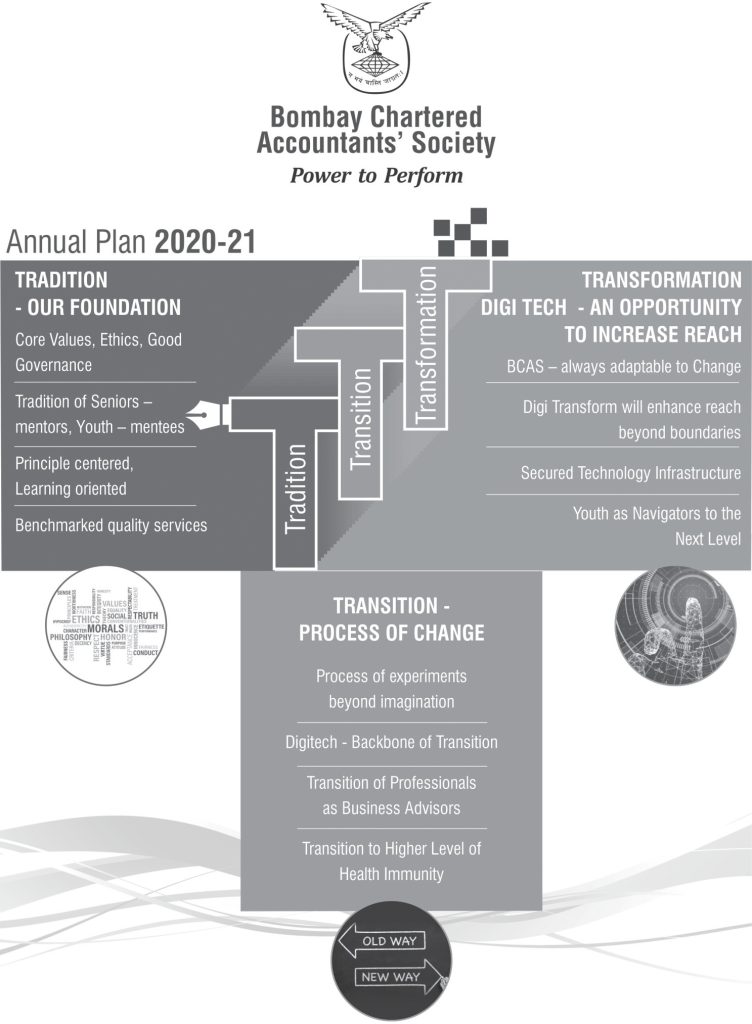
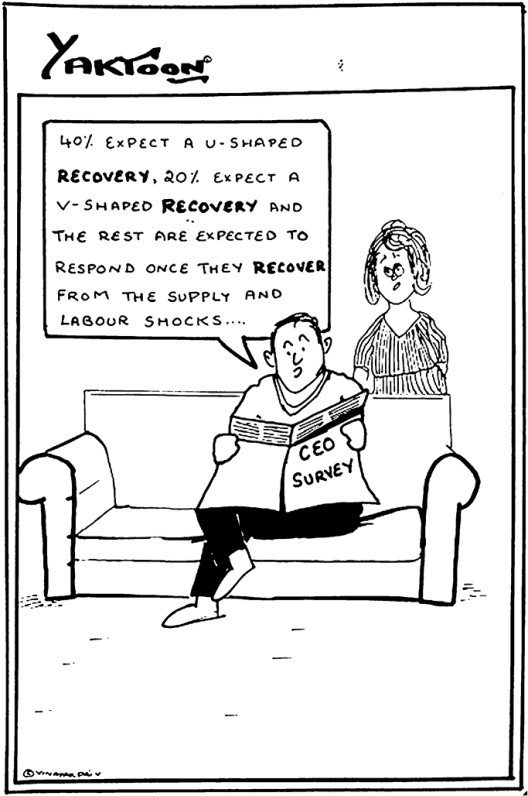

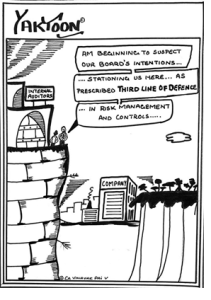
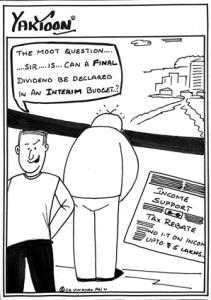














































 Students Committee performing the flash mob
Students Committee performing the flash mob




